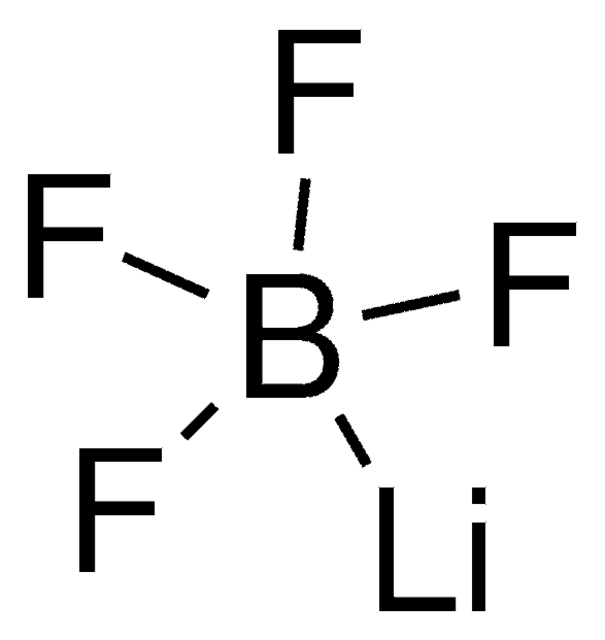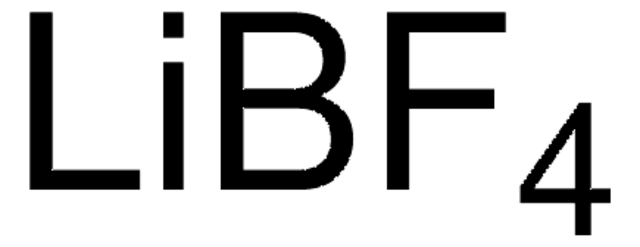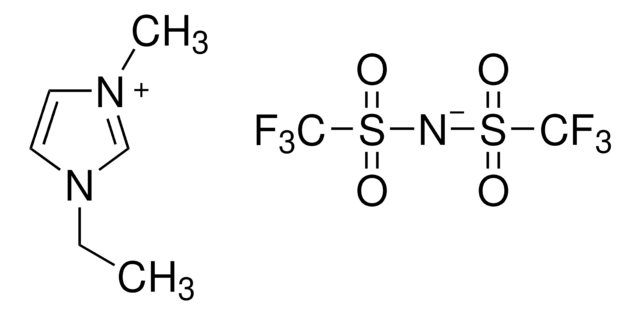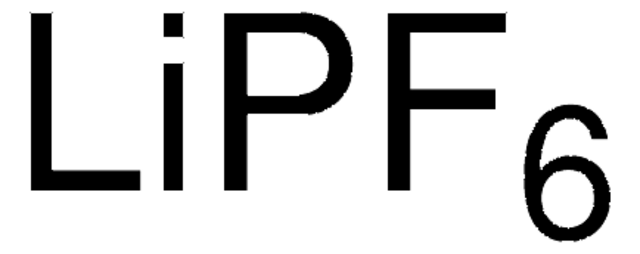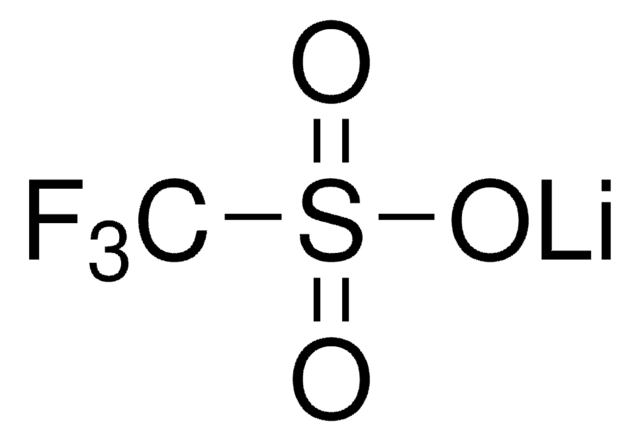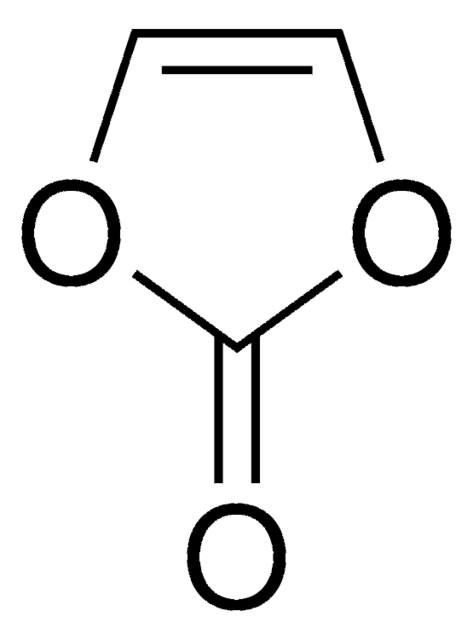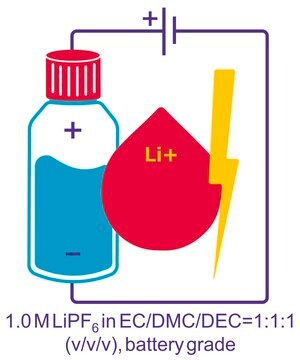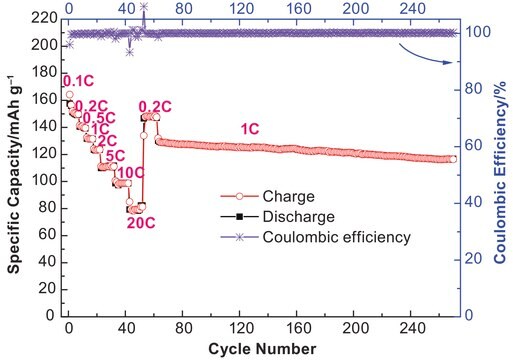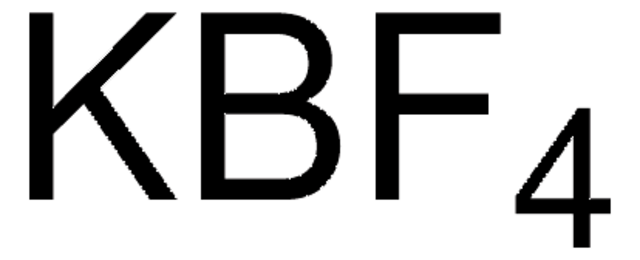Kluczowe dokumenty
901695
Lithium tetrafluoroborate
≥98%, acid <200 ppm, anhydrous
Synonim(y):
Lithium borofluoride, Lithium fluoroborate
About This Item
Polecane produkty
klasa czystości
anhydrous
Próba
≥98%
Formularz
powder
mp
293-300 °C (dec.) (lit.)
Zastosowanie
battery manufacturing
ciąg SMILES
[Li+].F[B-](F)(F)F
InChI
1S/BF4.Li/c2-1(3,4)5;/q-1;+1
Klucz InChI
UFXJWFBILHTTET-UHFFFAOYSA-N
Szukasz podobnych produktów? Odwiedź Przewodnik dotyczący porównywania produktów
Opis ogólny
Zastosowanie
Przestroga
- These electrolyte solutions have extremely low water content; Please handle under inert and moisture free environment (glove box).
- Keep away from heat, sparks and flame. Avoid moisture, strong acid, strong alkalis, and oxidizing agents. Avoid skin and eye contact from product. Highly toxic and corrosive gases (HF) are generated by reaction with moisture os use only under inert gas atmosphere.
- Please handle under inert and moisture free environment.
Storage:
Keep containers away from heat, humidity, direct sunlight and ignition source. Keep containers tightly closed in a cool dry and well-ventilated place. Do not store with strong oxidizing agents.
Informacje prawne
produkt powiązany
Hasło ostrzegawcze
Danger
Zwroty wskazujące rodzaj zagrożenia
Zwroty wskazujące środki ostrożności
Klasyfikacja zagrożeń
Acute Tox. 4 Oral - Eye Dam. 1 - Muta. 2 - Skin Corr. 1B
Kod klasy składowania
8B - Non-combustible corrosive hazardous materials
Klasa zagrożenia wodnego (WGK)
WGK 3
Temperatura zapłonu (°F)
Not applicable
Temperatura zapłonu (°C)
Not applicable
Wybierz jedną z najnowszych wersji:
Certyfikaty analizy (CoA)
Nie widzisz odpowiedniej wersji?
Jeśli potrzebujesz konkretnej wersji, możesz wyszukać konkretny certyfikat według numeru partii lub serii.
Masz już ten produkt?
Dokumenty związane z niedawno zakupionymi produktami zostały zamieszczone w Bibliotece dokumentów.
Klienci oglądali również te produkty
Nasz zespół naukowców ma doświadczenie we wszystkich obszarach badań, w tym w naukach przyrodniczych, materiałoznawstwie, syntezie chemicznej, chromatografii, analityce i wielu innych dziedzinach.
Skontaktuj się z zespołem ds. pomocy technicznej